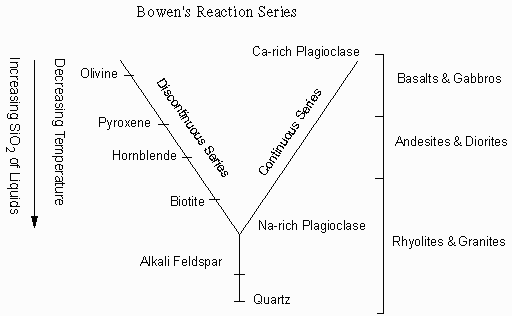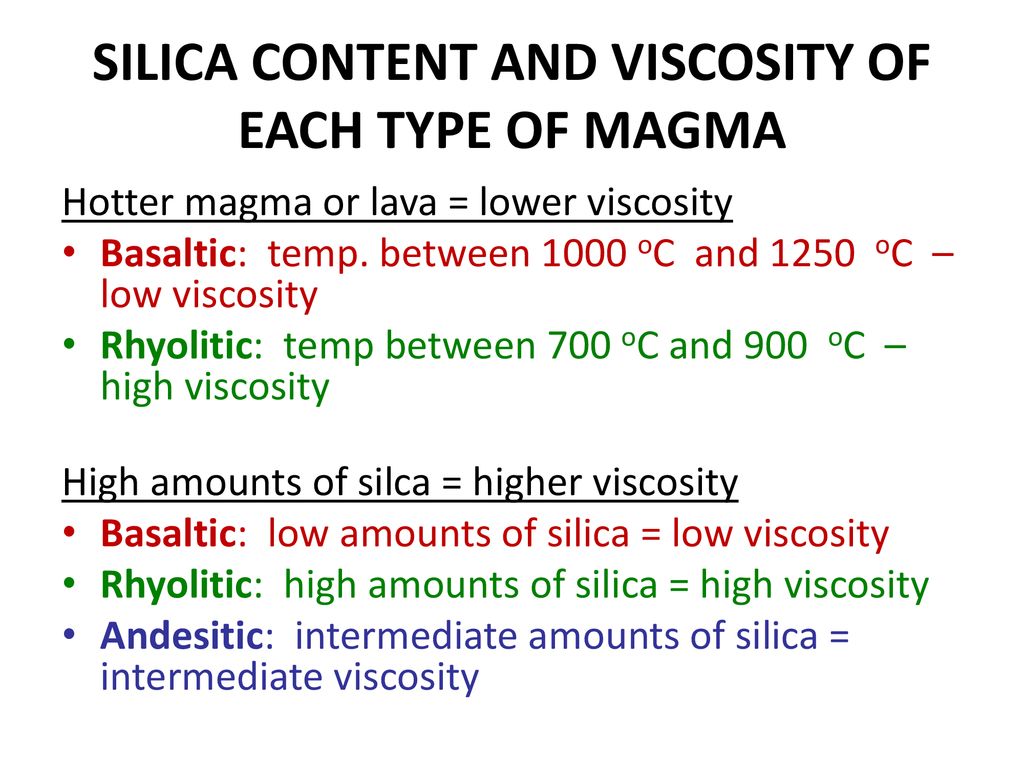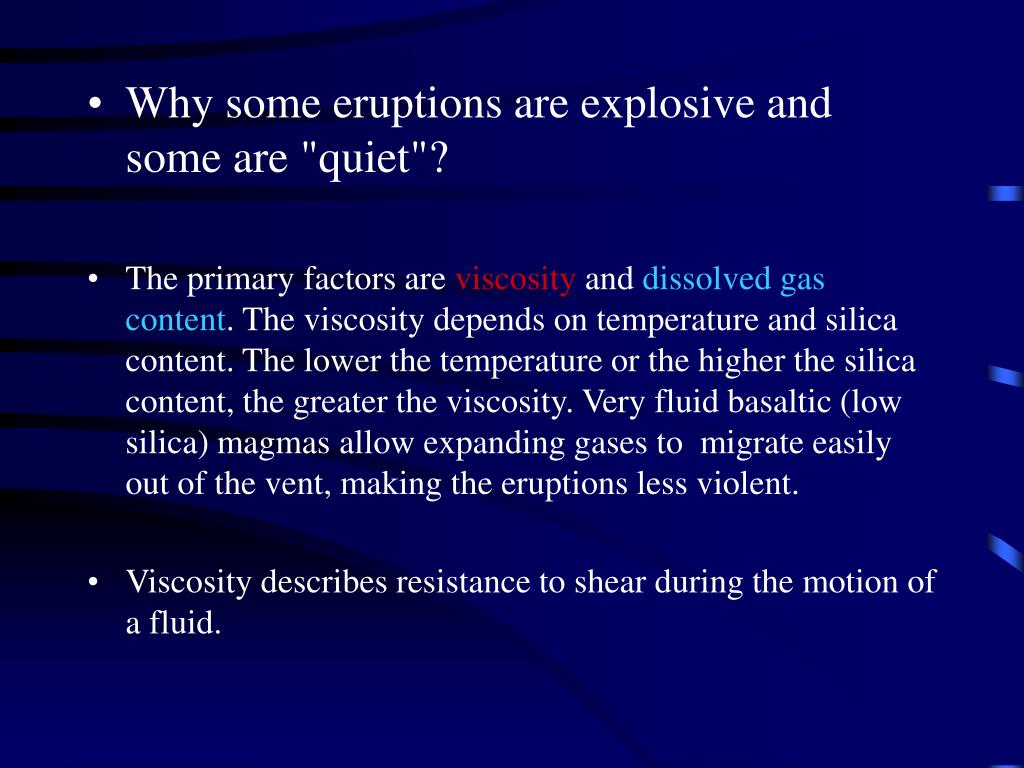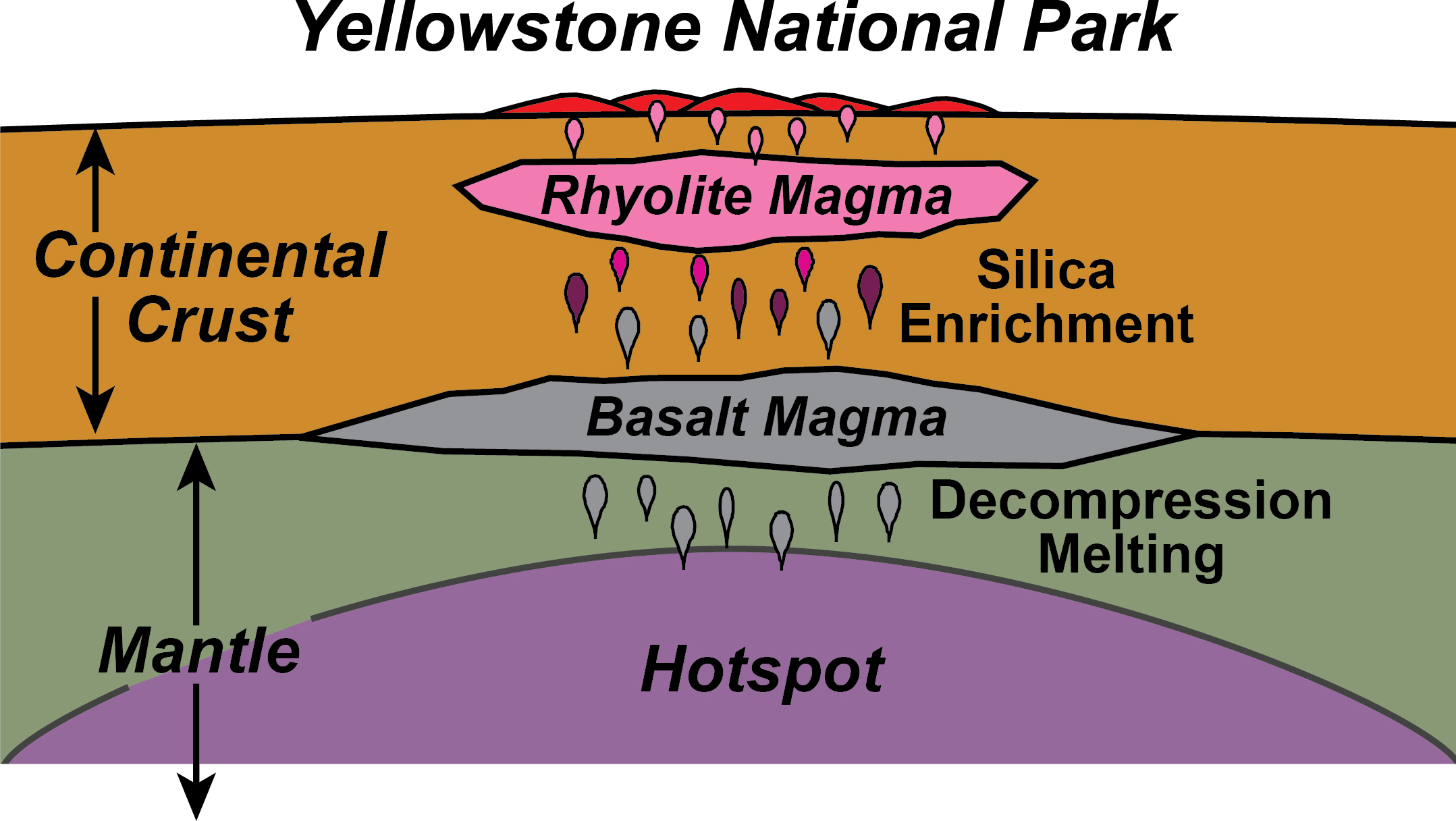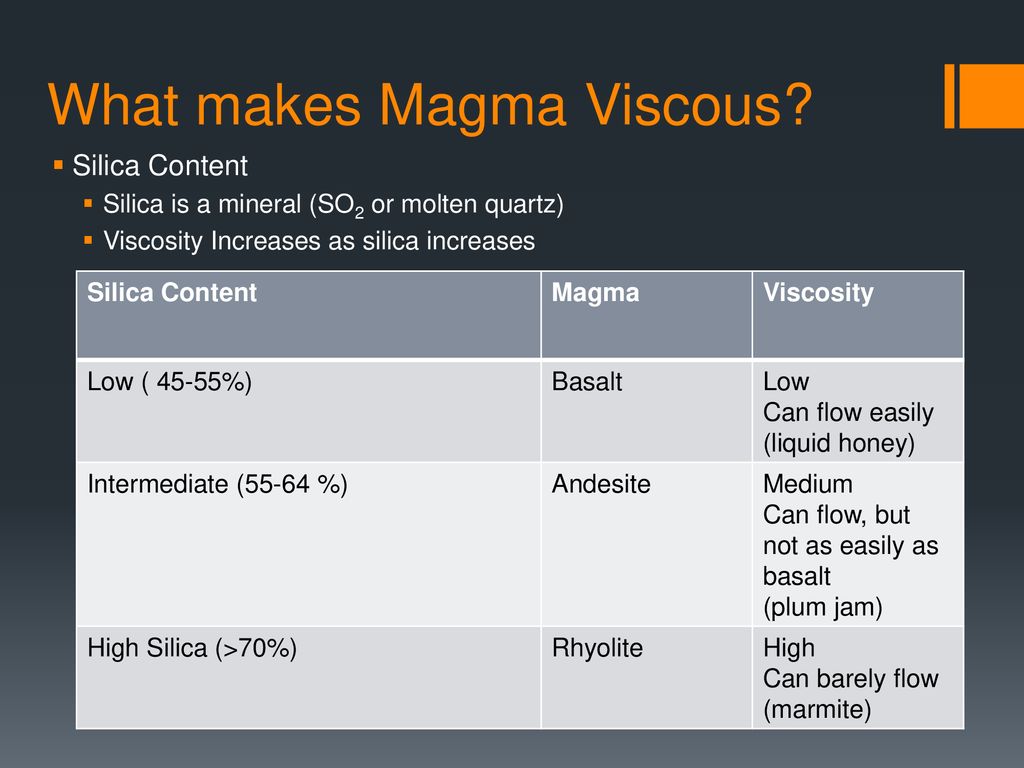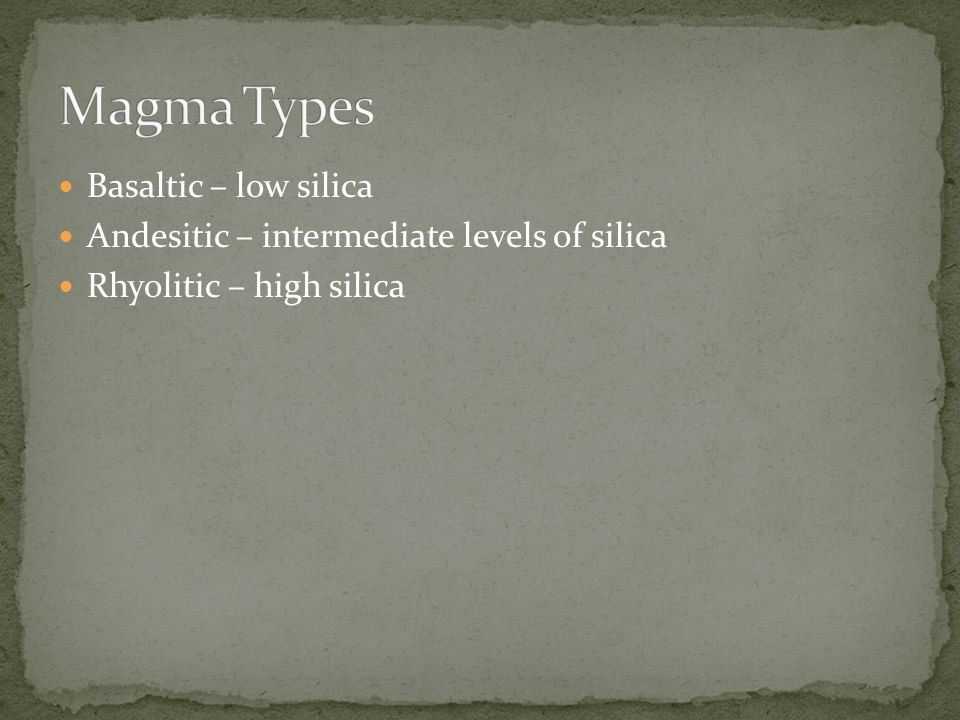Rhyolitic magma is generated along convergent plate boundaries where oceanic lithosphere descends into the mantle at subduction.
Basaltic magma has a lower silica content than granitic magma.
Basaltic magma has low high viscosity and contains little lots of gas.
Granitic magma is higher in silica than basaltic magma.
Describe how partial melting of the mantle rock peridotite can generate a basaltic mafic magma.
Rhyolitic magmas have lower temperatures than basaltic magmas.
Basaltic magmas have a high low silica content and a high low viscosity.
Lower temperature magmas have higher viscosity than higher temperature magmas viscosity decreases with increasing temperature of the magma.
As rock begins to melt the minerals with the lowest melting temperatures are the first to melt.
The rising subduction zone magma is probably basaltic in composition and is formed by the partial melting of mantle rocks.
As the rising magma moves slowly up through the continental crust of the overriding plate however two things may occur to increase significantly the silica content of the magma.
Solidify magma with a high water content has a greater tendency to in the crust compared with a magma with a lower water content.
It has an intermediate density cooling point and viscosity compared with other types of magma.
Thus basaltic magmas tend to be fairly fluid low viscosity but their viscosity is still 10 000 to 100 0000 times more viscous than water.
Typical granitic magma contains silica water than typical basaltic magma.
Direct measurements of temperatures at volcanoes give less satisfactory data than might be expected.
Magmas have a high silica content and a high viscosity.
Due in part to the lower temperature felsic magma is much more viscous than mafic magma meaning it is much thicker and more resistant to flowing.
Although basaltic magma can result in basaltic rocks and granitic magma can result in granitic rocks they can also form other rocks depending on how quickly the magma cools.
What magma produces very explosive eruptions.
Measurements of the basaltic magmas at kilauea vary from 750 to over 1200 those at vesuvius vary nearly as much.
Because of its low viscosity and gas content basaltic magma is geberally the least explosive of the common magma types.
Andesitic magma is in between basaltic and rhyolitic magma with a moderate amount of silica.
Low magmas have a low silica content and a low viscosity.

